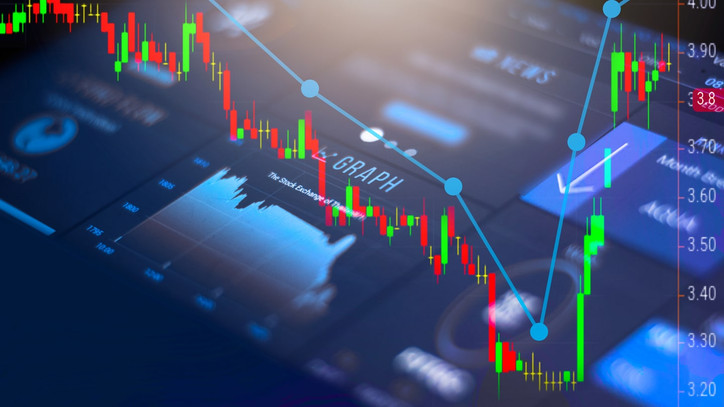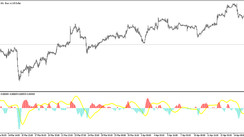In order to early identify trends and see opportunities on the horizon, we have to look back at first. The mortgage and, subsequently, financial crisis that arose in the USA in September 2008 as a result of the fall of Lehman Brothers hit the entire world. The banking system in the United States nearly lied in ruins and on the top of that, significant banking houses in Europe struggled to survive. Renowned financial institutions such as Deutsche Bank, Erste, Banca Monte Dei Paschi Di Siena, Unicredit and also the Royal Bank of Scotland seated on the British Isles were facing problems.
The financial system got stuck although governments and central banks in individual countries offered relatively massive aid, which finally saved the banking system from a total collapse. The crisis that originally spread in the world of money subsequently spilled over into the real economy and the most advanced countries around the globe had to face the deepest year-on-year slumps in their performance since the Great Depression in 1930’s.
Miners, time is up!
The crisis caused huge uncertainty not only in the corporate sector but also in households that cut their consumption costs radically. The automotive industry was one of the first sectors to feel the effects. In the United States and in Europe, the so called scrappage scheme allowance was introduced and the administration of the then US President Barack Obama even put General Motors under state control to protect the car producer against downfall.
Governments and central banks continued to make every effort not to repeat the largest global economic crisis in history. They succeeded to a large extent when economic recovery occurred in 2010 and in the following years. However, this was at the cost of increased deficits of public budgets. Governments did not have to worry about it thanks to the exceptionally loose monetary policy (i.e. in fact zero interest rates).
The structure and balance of the global economy started to change. While before the crisis the rankings of the world’s most valuable companies were dominated by car producers, banking houses and mining companies, in the following decade, technology companies got into the lead. For example, in late 2011, Apple became temporarily the most valuable brand of the world, shortly dethroning the Exxon Mobile mining company. In February 2012, Apple returned to the first place and has stayed on the top practically to date.
Lo and behold, China
In 2013, Google appeared in the top ten, moving to the top three a year later. In the middle of the last decade, technology companies virtually controlled the imaginary winners’ rostrums when Apple was joined by Google and Microsoft. Exxon Mobile, Petro China or the Wells Fargo bank were still in the top ten. However, Johnson & Johnson started to raise its head as a representative of the pharmaceutical industry. This seemed to signal what was to come five years later. A more significant position was taken by Tesla, which can be considered not only a car producer but also a technology company, and the importance of cryptocurrencies headed by Bitcoin gradually increased.
Apart from the changing of the guard on the first places in the global ranking of companies, the last decade also experienced a change in the economic balance of global powers. While before 2010, hardly anybody could cast doubt on the leading position of the United States, the European Union countries and Japan as the global economic triumvirate, since the last crisis, the voice of China as a new economic power has been more and more intensive.
It is increasingly obvious that the most populous country in the world should be taken into account. The Chinese economy is not only closing on the US in terms of size but also its development goes hand in hand with the technological progress. China’s network of smart phones, intelligent transportation systems or industrial robots has been much denser than in a number of advanced western countries. The Celestial Empire is now the key tech player that the United States are worried about.
2020 as a turning point
In January 2017, Donald Trump was elected the US President, promising to give the United States their former drive. He mothballed a proposed trade agreement with the European Union, which would significantly expand their common economic area. Shortly after that, Donald Trump gave an instruction for the USA to withdraw from the Trans-Pacific Partnership Agreement and launched a trade war with China. However, wicked tongues predominantly considered this step to be the US effort to inhibit the technological and economic onset of the most populous country in the world.
Despite of that, the US economy has reported the longest uninterrupted economic growth since World War II. A turning point was expected to occur every minute. And it did occur albeit not in the form of a standard economic cycle but as the notorious black swan disguised as the coronavirus pandemic.
An unprecedented economic crisis resulted from the pandemic all over the world as governments had to take drastic anti-epidemic measures. After the initial slump in the financial markets, the companies that would form the core of future economic recovery were identified. While the traditional industries such as mining of mineral raw materials, the automotive industry or air transport are still sinking to the bottom, technology companies have definitely consolidated their lead. Google and Apple were joined by Amazon owned by the richest man in the world, Jeff Bezos, and their Chinese competitors (Alibaba and Huawei) have also showed a dramatic growth, followed by the health service and pharma industries.
The world aims at virtuality
The following ten years are expected to be characterised by further dramatic development of robotic automation, nanotechnologies and digitisation. The global economic peloton will be led by a country that will be able to build its 5G network infrastructure quickly and effectively, develop the Internet of Things and provide for a seamless flow of massive volumes of data. From this point, there will be just a step to the clean and autonomous mobility.
The power sector will offer new development opportunities. It is likely to move from the model of a large central source and a dense distribution network towards a smart grid model under which the points where electricity is produced and consumed will get closer. Technological progress will make smart solutions more available to an increasingly wider range of users. The economic system is anticipated to rely more on local resources without this having a negative effect on labour distribution and specialisation that are one of the drivers of economic development.
The importance people attach to the health risks relating to the coronavirus pandemic showed that the pharmaceutical sector would be among the most strictly monitored industries in 2020-2021 and in the following years.
From the geopolitical perspective, we recommend monitoring the development of India, which is the world’s second most populous country. Its importance will grow, similar to the eastern countries that have recently signed the Regional Comprehensive Economic Partnership. The focus of global economic activities definitely seems to move from Europe to America and Asia.
Tony Christoforou
General Manager
Goldenburg Group Ltd.





